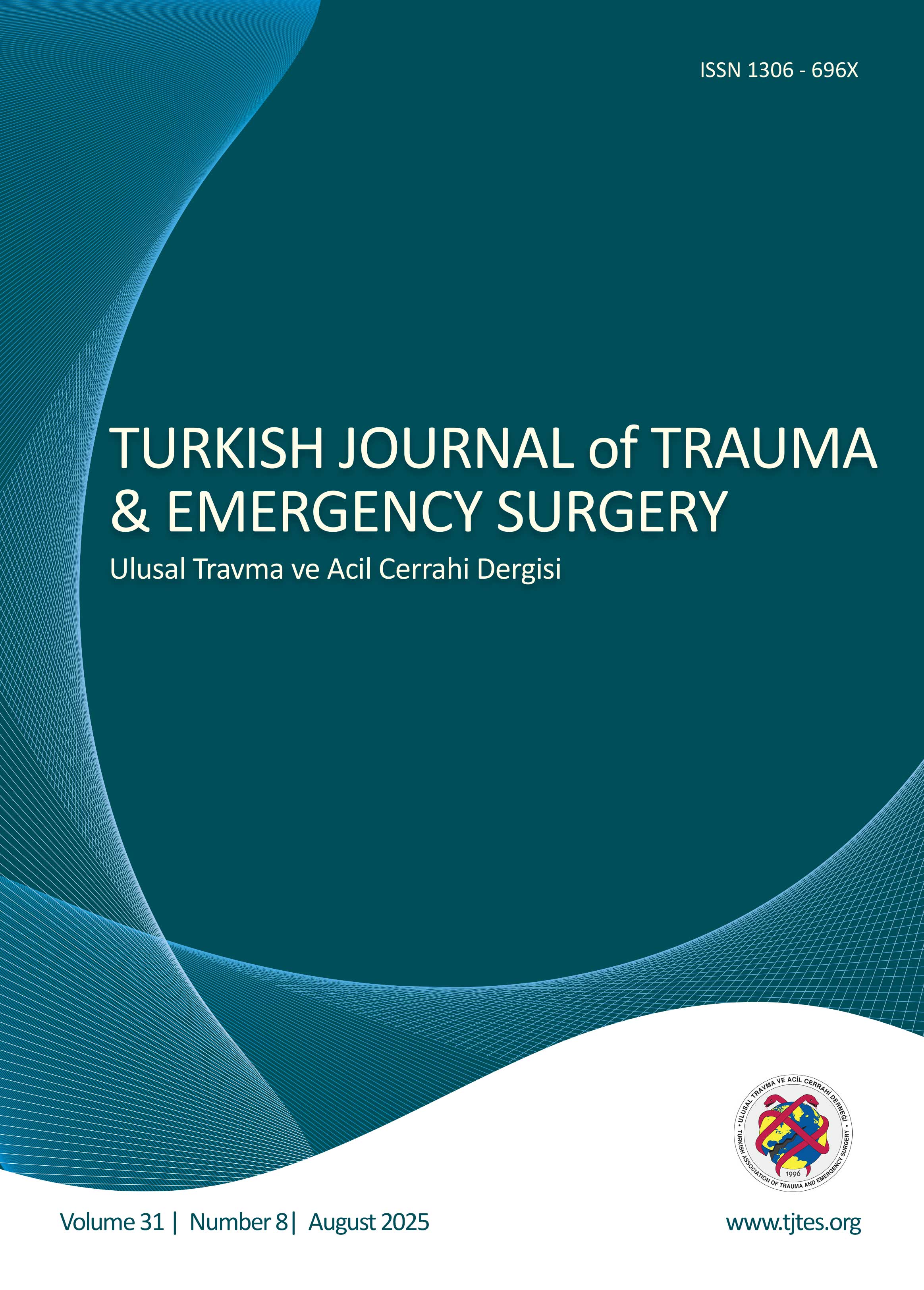Hızlı Arama
Acil servis sunumunun rektosigmoid kanserinde erken cerrahi ve onkolojik sonuçlar üzerindeki etkisi: Tek merkezli retrospektif analiz
Erkan Somuncu1, Mahmut Ozan Aydın1, Hatice Telci1, Fatma Şahin1, Emre Bozdağ1, Serhan Yılmaz2, Ali Kocataş11Sağlık Bilimleri Üniversitesi, Kanuni Sultan Süleyman Eğitim Ve Araştırma Hastanesi, Genel Cerrahi Kliniği, İstanbul2Sağlık Bilimleri Üniversitesi, Bilkent Şehir Hastanesi, Genel Cerrahi Anabilim Dalı, Ankara
AMAÇ: Rektosigmoid bölge kanserleri, diğer kolorektal kanserlere kıyasla daha yüksek acil başvuru oranlarıyla kolorektal kanserlerin önemli bir bölümünü oluşturur. Bu çalışmanın amacı, rektosigmoid bölge kanserlerinin acil ve elektif başvurularını cerrahi ve tümör patoloji sonuçları açısından karşılaştırmaktır.
GEREÇ VE YÖNTEM: 2021 ile 2025 yılları arasında rektosigmoid bölge kanseri nedeniyle ameliyat edilen 321 hasta retrospektif olarak değerlendirildi. Hastalar hastane yatışlarına göre iki gruba ayrıldı: Acil (n=76) ve elektif (n=245). Demografik özellikler (yaş, cinsiyet, ASA skoru), cerrahi özellikler (yaklaşım, tümör yeri, operasyon türü, süre), postoperatif komplikasyonlar (Clavien Dindo sınıflandırması, hastanede kalış süresi) ve patoloji sonuçları (perinöral invazyon, lenfovasküler invazyon, T/N evresi, lenf nodu sayısı) analiz edildi.
BULGULAR: Acil grupta yaş ortalaması (67.93±13.36 yıl) elektif gruptan (64.42±11.65 yıl) daha yüksekti (p=0.027). Acil grubunda daha fazla açık cerrahi yaklaşım (p<0.001), sigmoid kanser (p<0.001) ve rezeksiyon + kolostomi operasyonu (p<0.001) vardı; elektif grupta ise daha yüksek anastomoz oranları görüldü (p<0.001). Postoperatif komplikasyonlar, operasyon süresi ve hastanede kalış süresi acil grupta anlamlı olarak daha yüksekti (p<0.001, p<0.001, p=0.018). Perinöral invazyon (p<0.001), lenfovasküler invazyon (p=0.006), T ve N evreleri (p<0.001, p=0.006) ve pozitif lenf nodu sayısı (p=0.006) acil grupta daha yüksekti; ancak, çıkarılan lenf nodu sayısında bir fark bulunmadı (p=0.323).
SONUÇ: Acil başvurularda daha kötü tümör özelliklerine rağmen, onkolojik olarak uygun cerrahi rezeksiyonlarla benzer patolojik sonuçlar elde edilebilir. Bu çalışma, acil ve elektif başvurular arasındaki cerrahi ve patolojik sonuçlardaki farklılıkları vurgulayarak, tedavi yaklaşımlarını optimize etme ihtiyacını vurgulamaktadır.
Impact of emergency presentation on early surgical and oncological outcomes in rectosigmoid cancer: a single-center retrospective analysis
Erkan Somuncu1, Mahmut Ozan Aydın1, Hatice Telci1, Fatma Şahin1, Emre Bozdağ1, Serhan Yılmaz2, Ali Kocataş11Department of General Surgery, University of Health Sciences, Kanuni Sultan Suleyman Training and Research Hospital, İstanbul-Türkiye2Department of General Surgery, University of Health Sciences, Bilkent City Hospital, Ankara-Türkiye
BACKGROUND: Cancers of the rectosigmoid region account for a significant portion of colorectal cancers malignancies and are associated with higher rates of emergency presentation compared to other colorectal cancers. This study aims to compare emergency and elective presentations of rectosigmoid junction cancers in terms of surgical and pathological outcomes.
METHODS: Between 2021 and 2025, a total of 321 patients who underwent surgery for rectosigmoid cancer were retrospectively evaluated. Patients were categorized into two groups based on the nature of their hospital admission: emergency (n=76) and elective (n=245). Demographic characteristics (age, gender, American Society of Anesthesiologists Physical Status Classification System [ASA] score), surgical details (approach, tumor location, type of operation, operative duration), postoperative complications (Clavien-Dindo classification, length of hospital stay), and pathology results (perineural invasion, lymphovascular invasion, tumor (T) and nodal (N) stage, lymph node count) were analyzed.
RESULTS: The mean age in the emergency group (67.93±13.36 years) was higher than in the elective group (64.42±11.65 years) (p=0.027). The emergency group had a higher frequency of open surgical approaches (p<0.001), sigmoid tumors (p<0.001), and resection with colostomy procedures (p<0.001), while the elective group had higher rates of anastomosis (p<0.001). Postoperative complications, operation duration, and length of hospital stay were all significantly greater in the emergency group (p<0.001, p<0.001, and p=0.018, respectively). Pathologically, the emergency group showed higher rates of perineural invasion (p<0.001), lymphovascular invasion (p=0.006), advanced T and N stages (p<0.001 and p=0.006, respectively), and a higher number of positive lymph nodes (p=0.006). However, there was no difference between the groups in the total number of lymph nodes removed (p=0.323).
CONCLUSION: Despite the inherent challenges of emergency presentation, adherence to principles such as complete mesocolic excision and adequate lymphadenectomy in both groups resulted in comparable pathological outcomes, demonstrating the feasibility of maintaining oncologic standards even in emergency settings. This study shows that, despite their complexity, emergency presentations do not preclude oncologically radical resections when managed with standardized protocols.
Makale Dili: İngilizce




